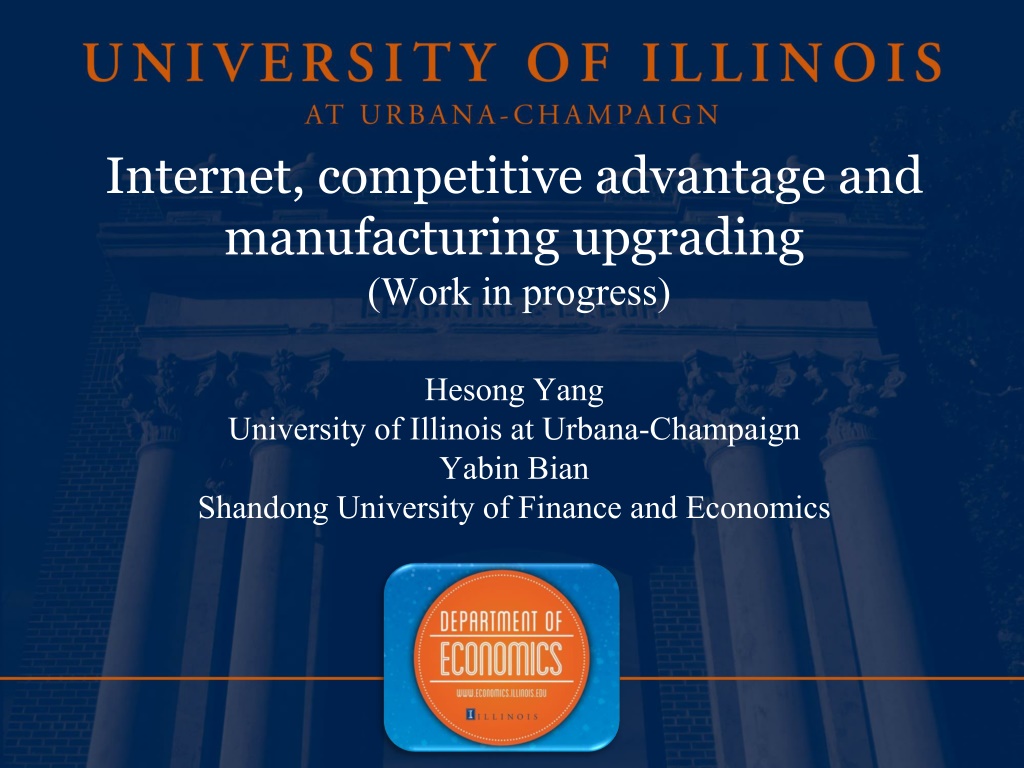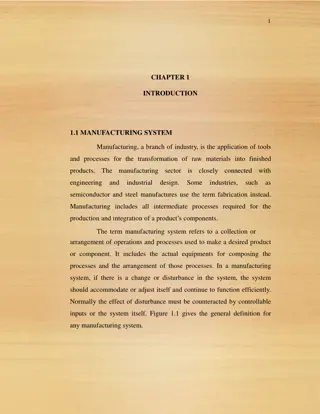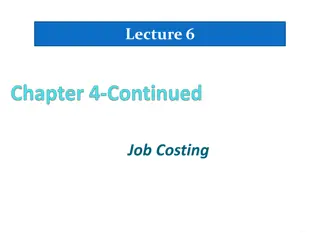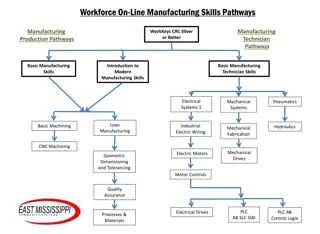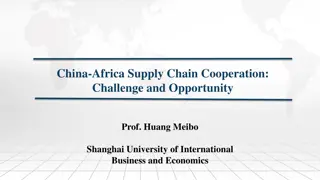Internet Integration for Manufacturing Upgrading in China
This work explores how manufacturing firms in China can leverage internet integration to reinvent competitive advantages in the industrial chain. It discusses the impact of internet technology on firm behaviors, value-added product distribution, and the Smiling Curve theory. The study delves into key components such as competitive advantage and value-added product modification, aiming to promote industrial upgrading and growth.
Download Presentation

Please find below an Image/Link to download the presentation.
The content on the website is provided AS IS for your information and personal use only. It may not be sold, licensed, or shared on other websites without obtaining consent from the author.If you encounter any issues during the download, it is possible that the publisher has removed the file from their server.
You are allowed to download the files provided on this website for personal or commercial use, subject to the condition that they are used lawfully. All files are the property of their respective owners.
The content on the website is provided AS IS for your information and personal use only. It may not be sold, licensed, or shared on other websites without obtaining consent from the author.
E N D
Presentation Transcript
Internet, competitive advantage and manufacturing upgrading (Work in progress) Hesong Yang University of Illinois at Urbana-Champaign Yabin Bian Shandong University of Finance and Economics
Introduction Background Information Potential problems with the high rate of economic growth from the perspective of industrial chain In recent years, manufacturing growth is slowing more quickly than overall economic growth Industrial policy from Central Government in Beijing, searching new growth point Sophistication of consumer s demand Research questions How manufacturing firms can reinvent their competitive advantages in the upstream, midstream and downstream of industry chain through Internet integration? With new competitive edges, how these firms can realize the growth and redistribution of value-added products? How Smiling Curve would respond to this process?
Literature Search The situation of China s economic conditions and Industrial Policy from central government Smiling Curve Theory manufacturing upgrading Criticism about Smiling Curve Theory Impact of technological change on behaviors of both firm and consumer Cases of some pioneer companies that introduce the concept of Industrial Internet
Key components Internet Competitive advantage Value-added product Modification of Smiling Curve
Internet plus Source: http://english. gov.cn/2016special/internetplus/
Modification of Smiling Curve Assumptions: Internet encourages enterprises to form new competitive edges with the external ideas from their customers New competitive advantages can increase Value-added product They can also change the distribution pattern of VAP The change of both growth and distribution patterns of VAP could promote industrial upgrading process in China
Next Steps Choose specific industry and companies in manufacturing field Learn more in depth about how this policy is implemented in this industry Data and indicator system Model Econometric analysis Modify theory
Works Cited Beal. D & E. R . Sabater. 2015 . Why Well-being Should Drive Growth Strategies. BCG. Collier , P & J . Page. 2011 . Industrial Development Report 2009. UNIDO. Eloot , K., Huang, A., Lehnich, M. (2013). A new era for manufacturing in China. Mckinsey Company. McKinsey Global Institute. 1998). Big Data-The Next Frontier For Innovation, Competition And Productivity. Mckinsey Company. Porter , M. 2015 . How Smart, Connected Products Are Transforming Competition. Harvard Business Review.
